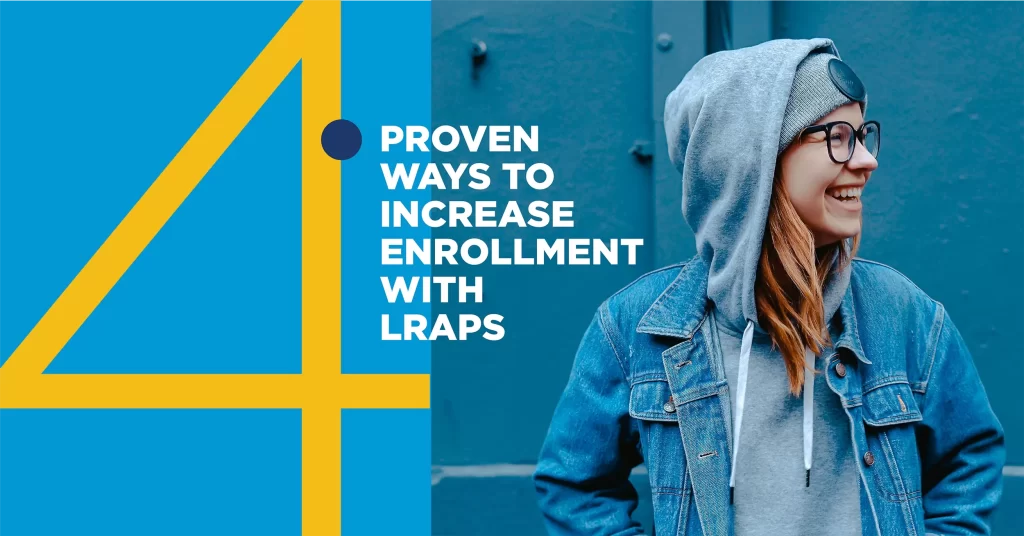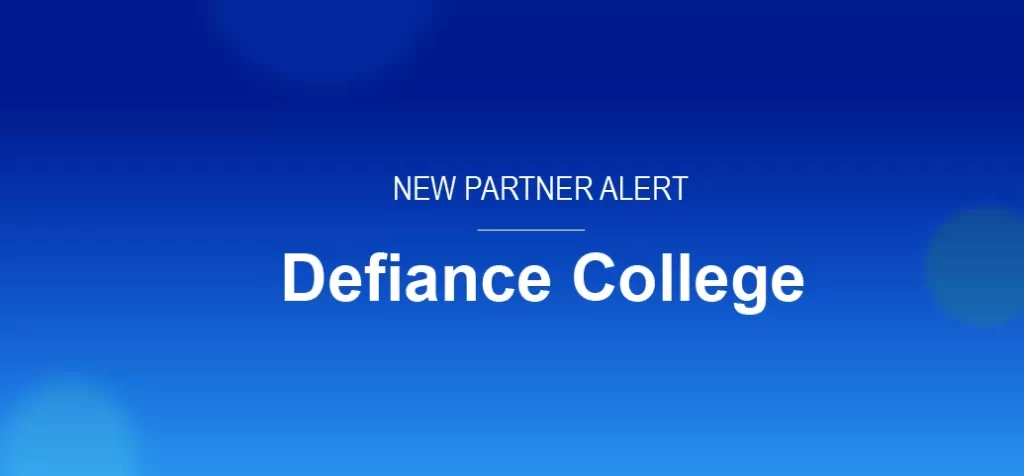
Enrollment Success
We’ve worked with more than 200 colleges and universities across the country since our founding in 2008. In that time, we’ve identified 4 tried and true ways to use our Loan Repayment Assistance Programs to boost access and increase enrollment. Find out what they are below.
What are the four ways our clients use LRAPs?
- One-sixth of our clients give LRAPs to all incoming students.
- Almost half give LRAPs to selected groups/segments.
- Almost half give LRAPs to individual students who express reluctance to borrow.
- About one-third give LRAPs to students who have become non-responsive (their “Stale Funnel”).
#1. Give LRAP to all incoming students.
About one-sixth of our clients do this.
This gives a college the biggest increase in enrollment. By offering LRAPs to all incoming students, colleges typically increase first-year enrollment by more than 10%, depending on the size of the college or university. This strategy delivers the biggest increase in net tuition revenue.
Typically, colleges launch this strategy in the fall. We recommend implementing this approach before you send out your financial aid award letters. MidAmerica Nazarene University is one partner that has provided their LRAP – The Pioneer Pledge – to all incoming first-year students and eligible transfers since the 2019-20 cohort.
“In the last four years that we’ve partnered with Ardeo, we’ve cut our discount rate by 7% and we’ve increased net tuition revenue by close to 15%.”
– Drew Whipple, Associate Vice President for Enrollment Management, MidAmerica Nazarene University
#2. Give LRAPs to all students in a selected group.
About half of our clients use LRAPs in this way.
This approach increases yield and enrollment in that group or segment. Common targeted groups are groups with low yield, such as non-athletes; out-of-state students; students coming from a few selected feeder high schools; students interested in a new major or a major that needs a boost; or all students with a certain level of financial need. One client, Montreat College, offers their LRAP – The Montreat College Commitment – to all non-athlete students to boost that targeted population.
Most colleges using LRAP in this way pick 2-4 segments in which they want to increase yield and enrollment. Colleges typically pick their target segments in the fall, as they finalize their recruitment plan for the year. However, many clients add one or more segments as the year progresses, and as they monitor progress in their funnel for that segment.
“We have, for many years now, tried to find a way to recruit more non-athletes at Montreat College, and LRAP has been a key component of that goal.”
– Erin Chapman, Former Director of Admissions, Montreat College
#3. Give LRAPs selectively to individual students who express reluctance to borrow.
About half of our clients use LRAPs in this way (sometimes in addition to giving LRAPs to targeted groups).
Your admissions counselors often hear prospective students indicate explicitly or implicitly that they are reluctant to borrow the necessary student loans to attend your college. Giving an LRAP to those individual students is a great way to calm their anxiety and change their enrollment decision from “no, I can’t come” to “yes, I can enroll.” You can use this approach all year long – from early in the fall, through financial aid discussions, through summer melt, and all the way to move-in day.
As a college, you can be highly confident that these students would not have enrolled without LRAP, giving you an excellent ROI on this use case. Many of our clients utilize LRAP in this way because of the high ROI, and most will also pair it with other strategies. One partner, Illinois College, offers LRAP selectively to students with financial aid appeals. You can also watch this webinar with Butler University to see how they used LRAPs in financial aid appeals conversations.
“What we really liked about offering LRAP was that it spoke to the value that we place in our education, encourages completion, and it promotes confidence in what we’re able to do for our students post-graduation.”
– Evan Wilson, Associate Vice President of Enrollment Management, Illinois College
#4. Give LRAPs to students in your “Stale Funnel.”
About one-third of our colleges use LRAPs in this way.
Sadly, it always becomes obvious that some prospects are going stale. They quit responding to emails or calls. They don’t finish their application. They don’t register. They don’t progress. Many of our clients give LRAP to some or all of these students.
Many start in the early spring. You can adjust this usage through the spring and summer depending on how you feel about your overall funnel. Many clients decide in March, April and even May if they need to use LRAP in this way. Earlier use does give better results. Bellarmine University is one client that began offering LRAPs late in the recruitment cycle, targeting students from their predictive model of high affinity, yet unresponsive, prospects.
“The cost of college almost deterred me from attending a university, but when I received an email about LRAP and its generous offer, it made me more confident about my decision to attend college.”
– Kaiser W., Bellarmine University LRAP Recipient
There are many other ways of using LRAPs to achieve your goals. We enjoy seeing the creativity as different colleges use LRAP to meet their unique needs. Here are a few additional ideas for your consideration:
- Some colleges want to maximize the impact. Others want to limit their use of LRAP to meet a budget, and so we put a cap on how many students can accept the LRAP award. Additional interested students go on a wait list, and the client college decides whether to also give them LRAP.
- Colleges primarily give LRAPs to incoming first-year students. Many colleges also give LRAPs to incoming transfers.
- You can also give LRAPs to rising sophomores and juniors to increase retention.
You can find additional details about how our clients use LRAPs and their success stories in these case studies. If you would like to talk about how LRAPs can help you achieve your priorities for the new recruitment cycle, click here to schedule a meeting.


